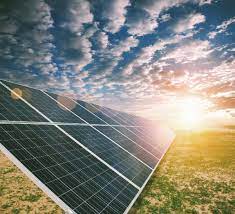Introduction:
Solar energy storage is a critical component in today’s renewable energy systems. By storing excess solar energy for use when sunlight is insufficient, these systems ensure a stable and reliable power supply. In this article, we explore the fundamentals of solar energy storage, outline best practices for system design and maintenance, and provide troubleshooting tips to maximize efficiency.
Table of Contents:
-
What is Solar Energy Storage?
-
Benefits of Energy Storage
-
Key Components and Technologies
-
Best Practices for System Design and Maintenance
-
Troubleshooting Common Issues
-
Conclusion
-
FAQs
1. What is Solar Energy Storage?
Solar energy storage involves capturing surplus energy generated by solar panels and storing it for later use. This is typically achieved using battery systems, which help smooth out the fluctuations in power generation due to variable sunlight.
2. Benefits of Energy Storage:
-
Enhanced Reliability: Ensures power availability during cloudy periods or at night.
-
Optimized Energy Usage: Allows for better management of energy flow and reduces wastage.
-
Cost Savings: By reducing reliance on grid power, storage can lead to lower energy bills over time.
3. Key Components and Technologies:
Modern solar energy storage systems comprise high-efficiency batteries, charge controllers, and sometimes smart energy management units. Technologies such as lithium-ion batteries and advanced lead-acid systems are commonly used.
4. Best Practices for System Design and Maintenance:
-
Proper Sizing: Ensure that the battery capacity matches your energy consumption needs.
-
Regular Maintenance: Periodically check connections, battery voltage, and overall system performance.
-
Temperature Management: Implement measures such as proper ventilation or insulation to protect batteries from extreme temperatures.
5. Troubleshooting Common Issues:
-
Low Battery Voltage: Check if the battery is adequately charged and that the charge controller is correctly configured.
-
Faulty Wiring: Inspect all connections for secure fittings and correct polarity.
-
System Misconfiguration: Verify that all settings (e.g., Low Voltage Disconnect) are aligned with your system requirements.
6. Conclusion:
Understanding the fundamentals of solar energy storage and applying best practices in design and maintenance are crucial for ensuring system reliability and efficiency. By adopting the right strategies, industry professionals can enhance energy security and optimize operational performance in their solar installations.
7. FAQs:
-
What type of battery is best for solar energy storage?
Lithium-ion batteries are popular for their efficiency and longevity, though system requirements may vary. -
How often should I perform maintenance?
It is advisable to inspect your system quarterly and perform a detailed check annually.


